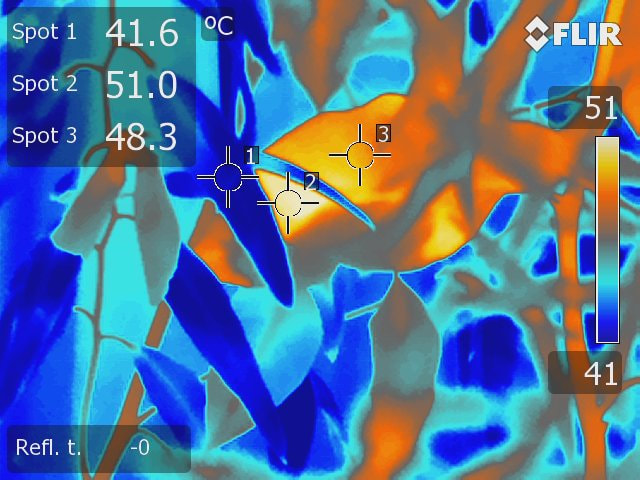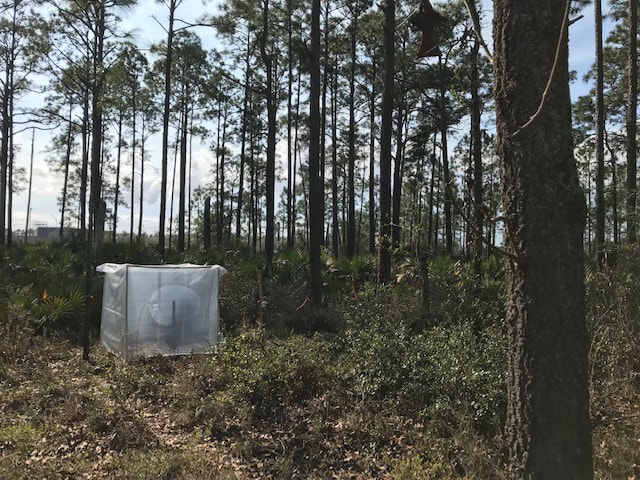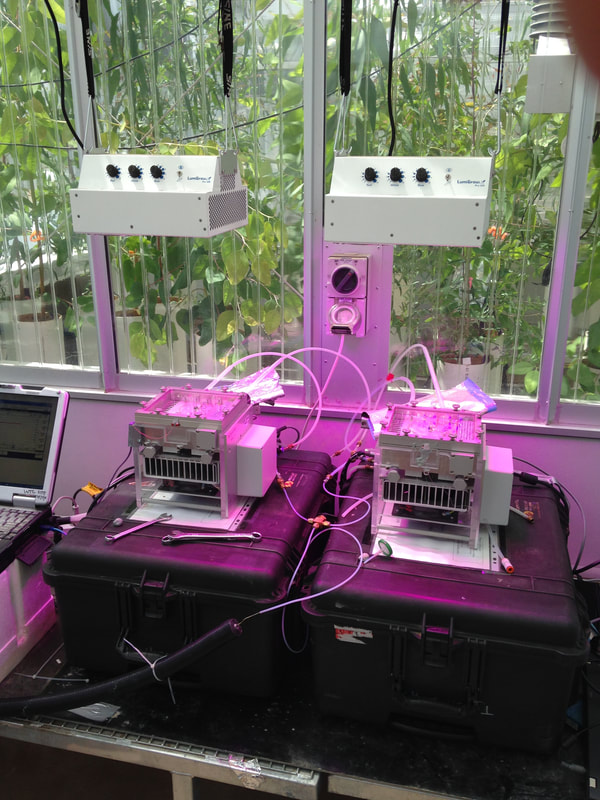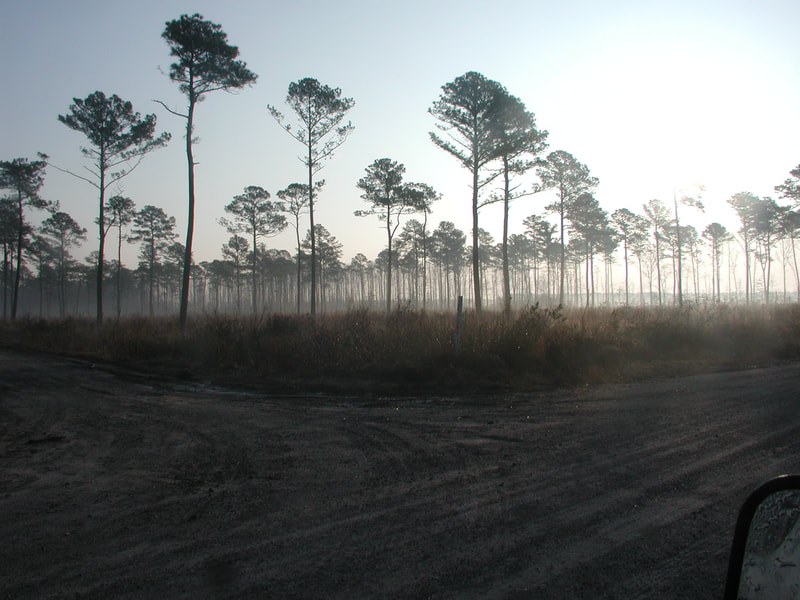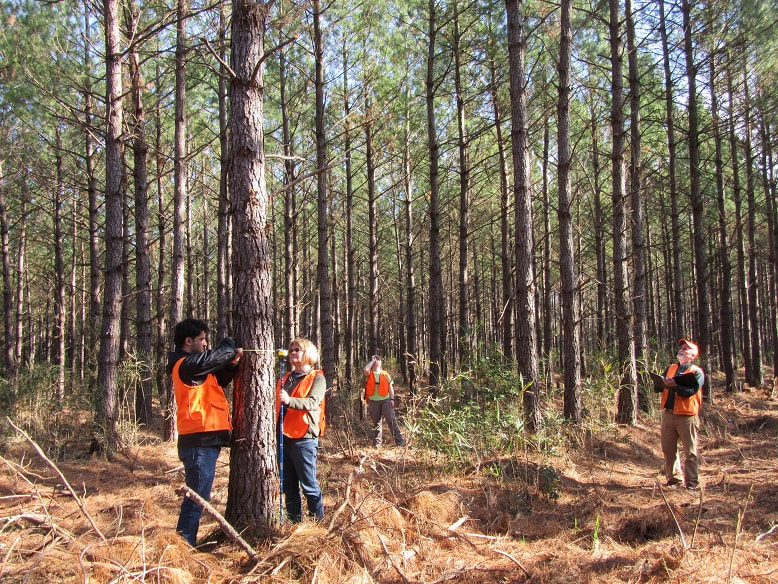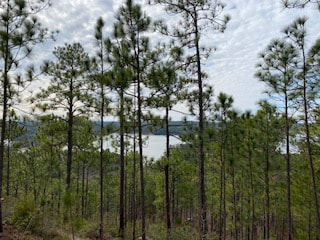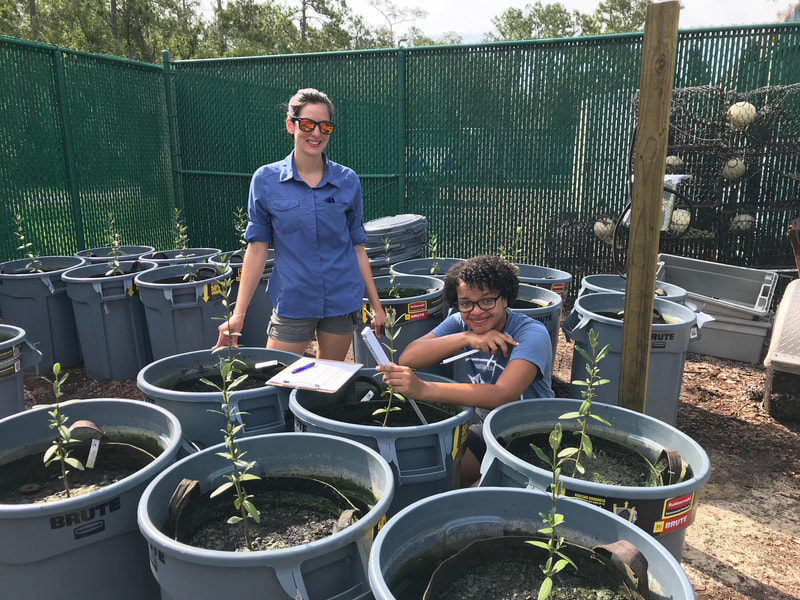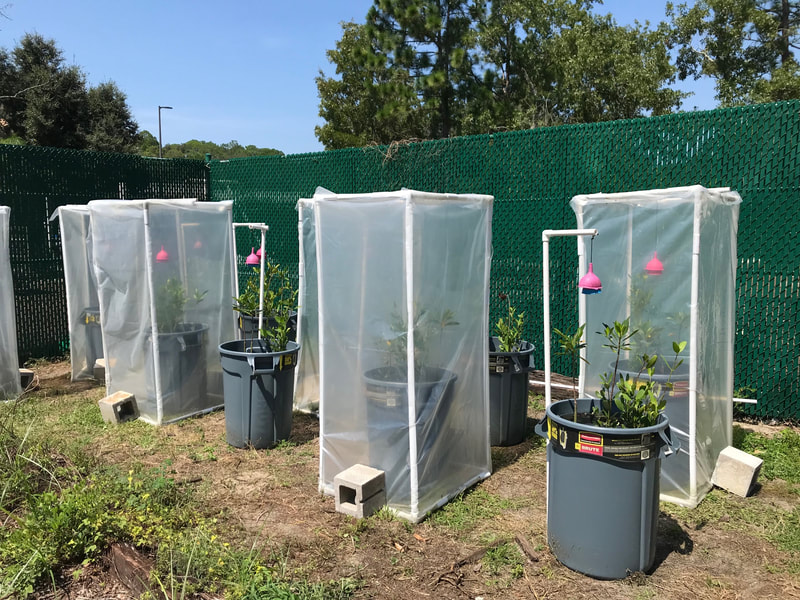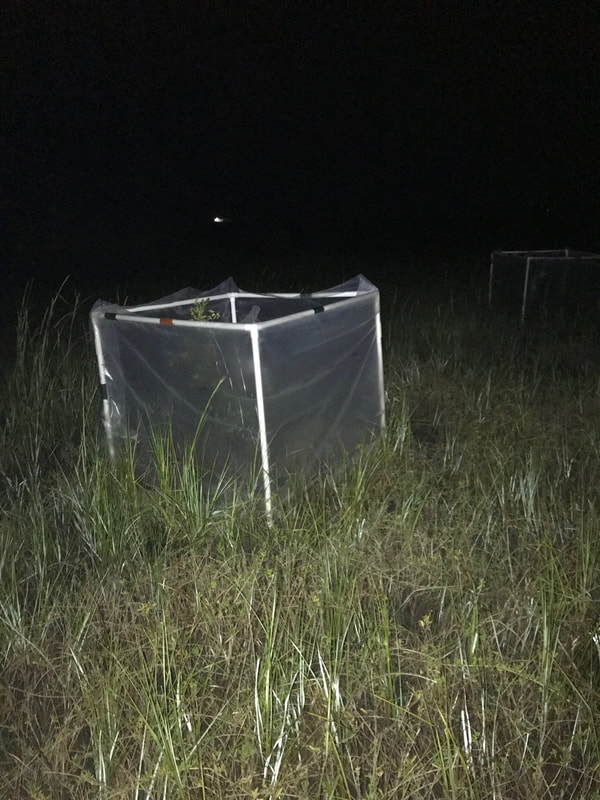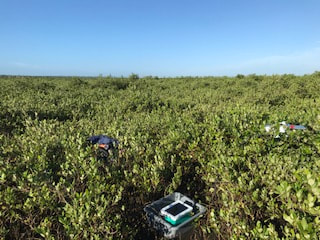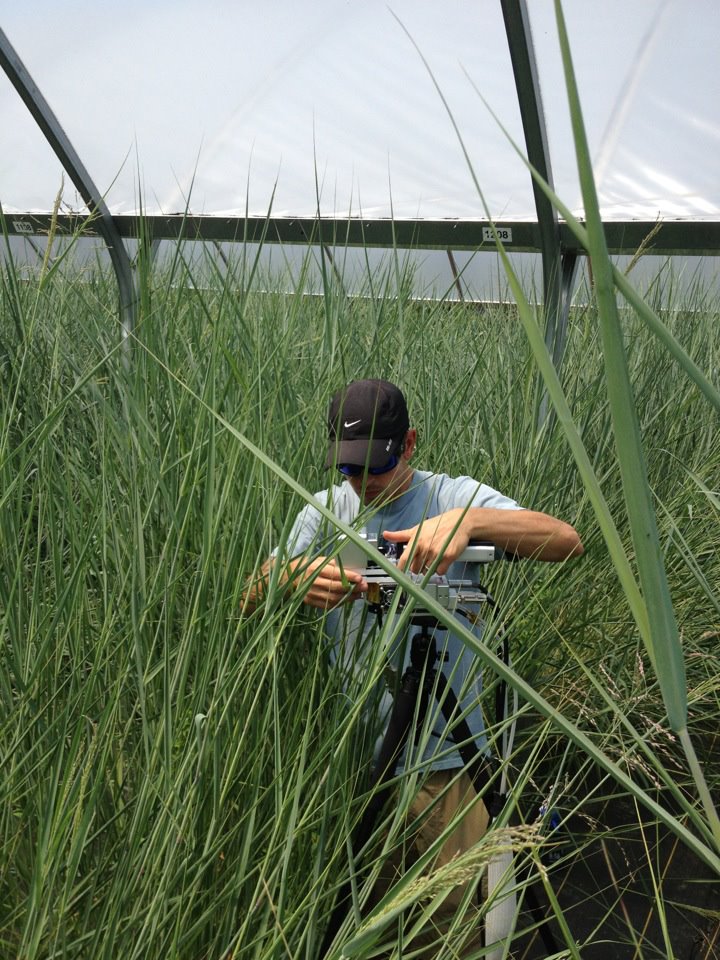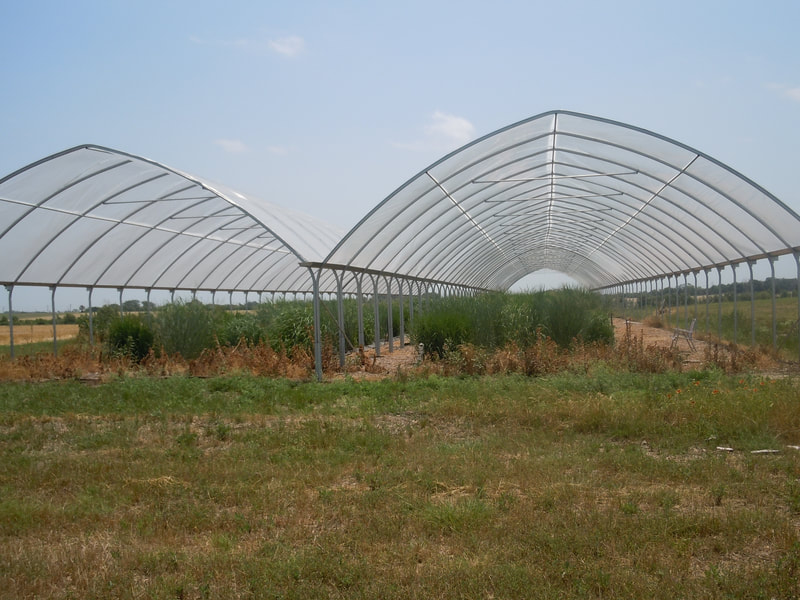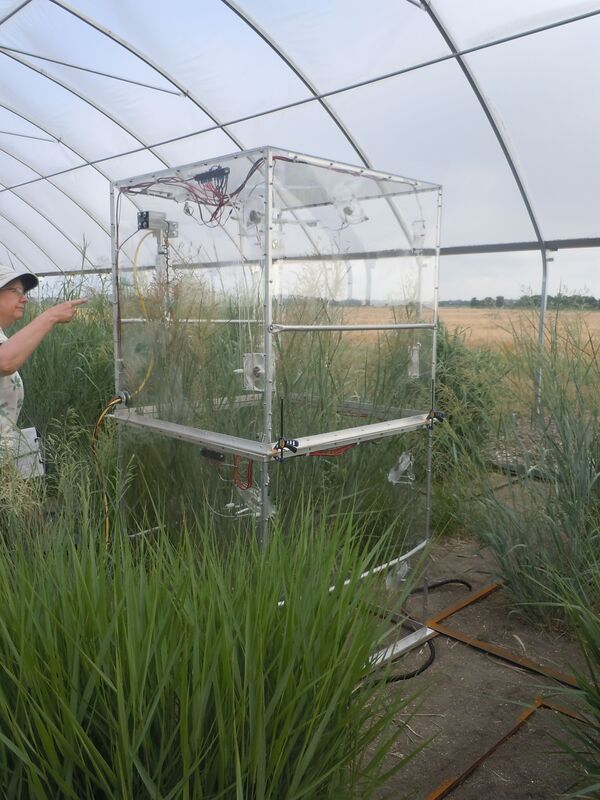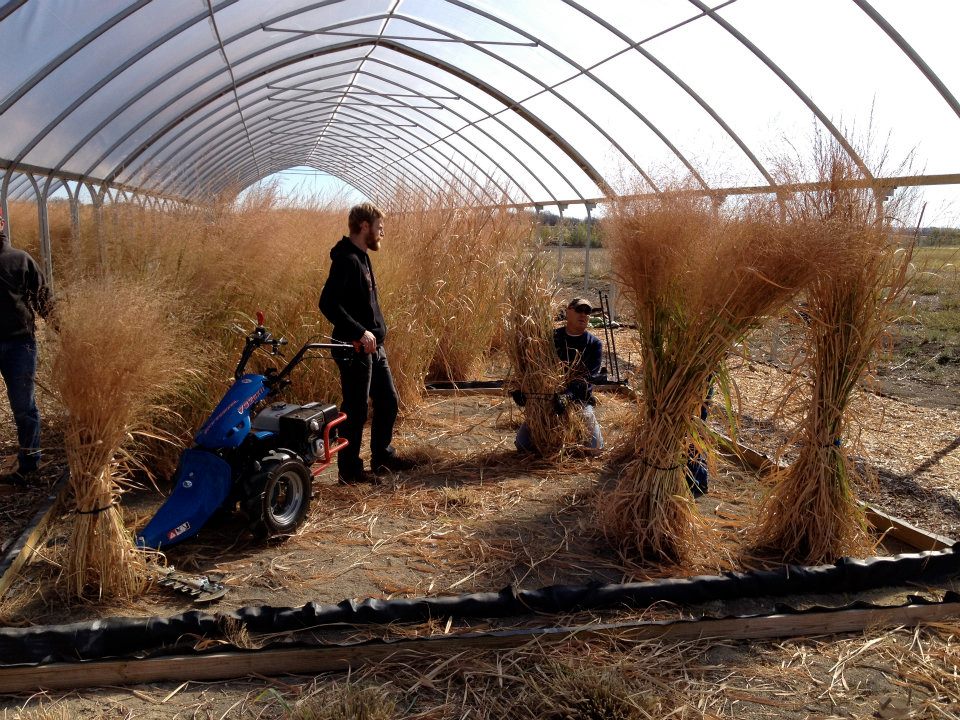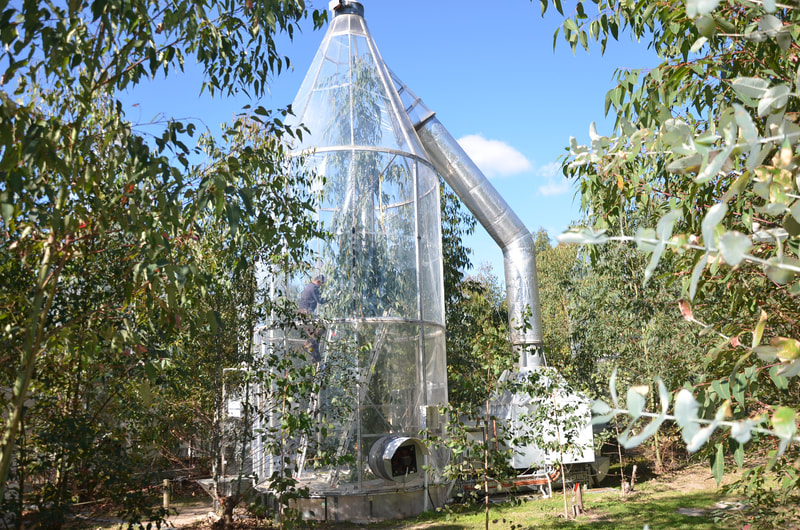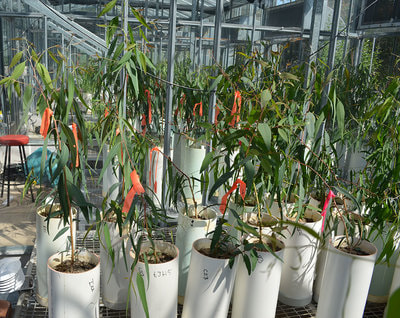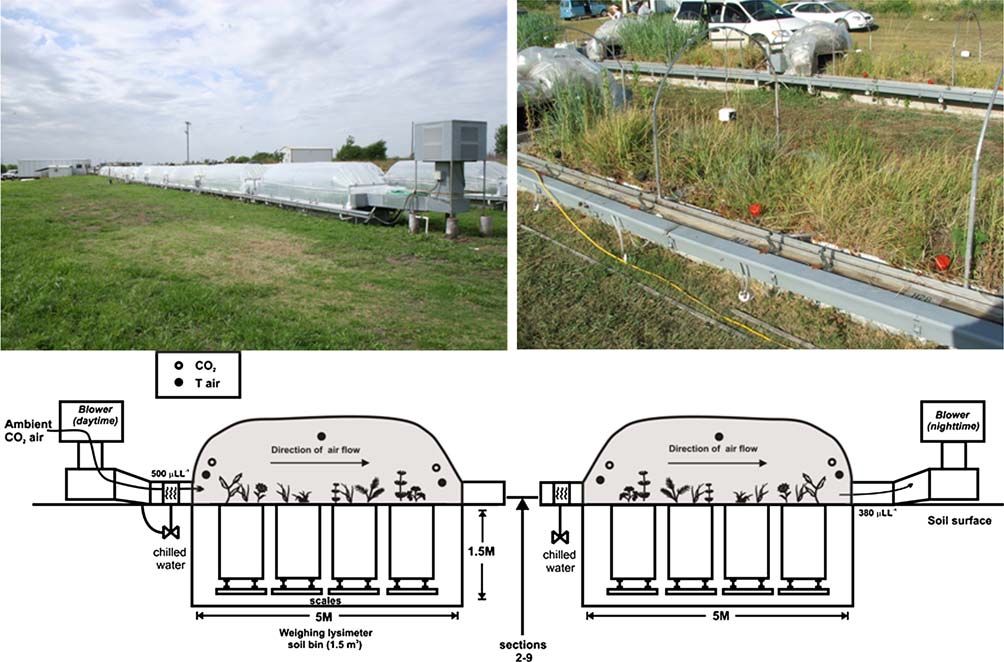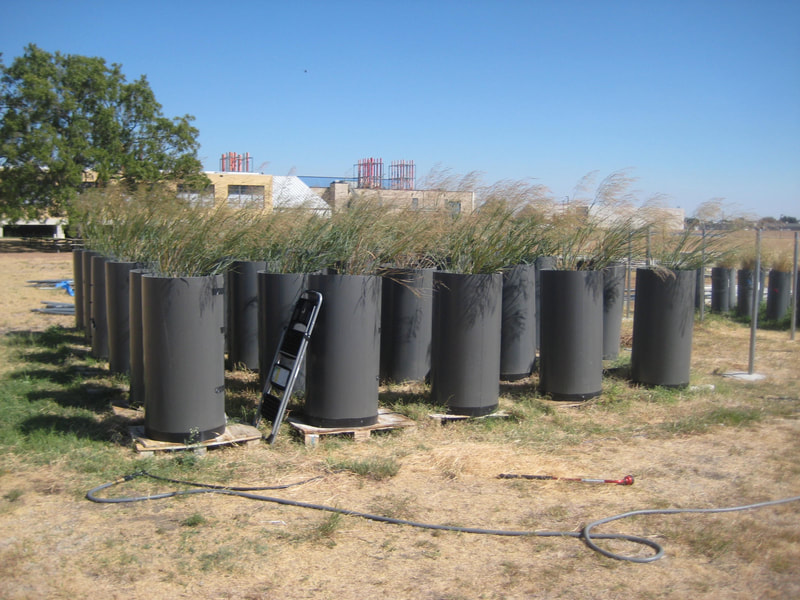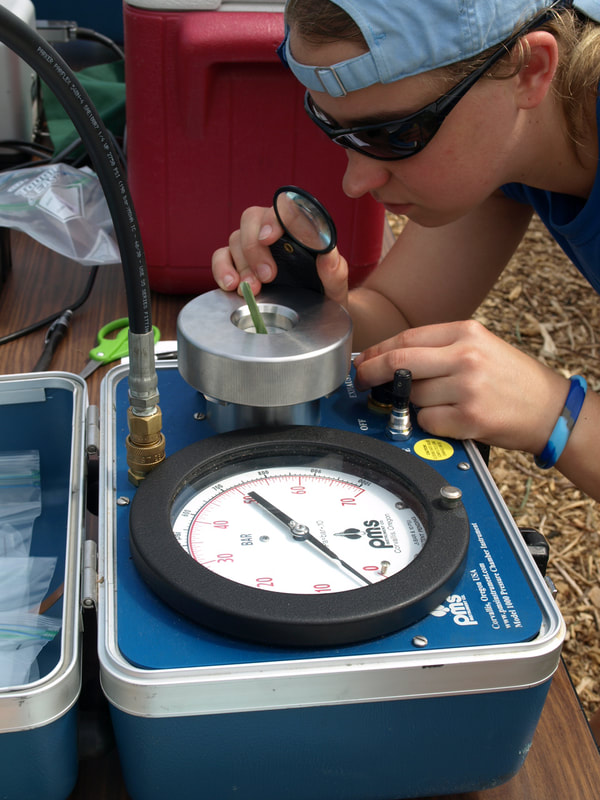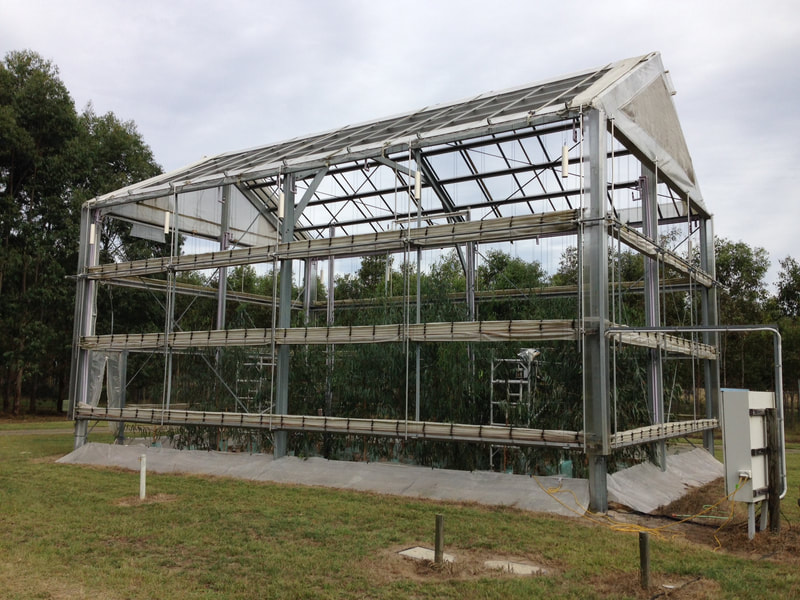We carry out research at various scales (leaf, plant, ecosystem) and work with a wide range of species (conifers, , broadleaved trees, grasses) and systems (coastal wetlands, pine forests, grasslands). We examine processes that regulate plant carbon, water, and nutrient relations.
Tree and forest responses to climate warming and heatwaves
|
The planet is warming with implications for plant species diversity, plant function, and ecosystem productivity. Moreover, physiological responses to warming temperatures are expected to strongly influence carbon exchange between the land and atmosphere, with consequences for future climate. Our previous work with colleagues in Australia (Western Sydney University) has provided new insight into tree responses to warming and heatwaves, as well as the the importance of temperature adaptation in governing tree responses warming. We’ve examined these questions using glasshouse studies and large field-based whole-tree chambers. We are initiating new experiments to test questions about the effects of warming and heatwaves on tree species and forest ecosystems.
|
Physiological ecology of southern pine
The southern U.S. is home to three ecologically and commercially important pine species: loblolly pine (Pinus taeda), longleaf pine (Pinus palustris), and slash pine (Pinus elliotii). We have carried out research examining relationships between genetic homogeneity of improved loblolly pine genotypes and uniformity of leaf-scale physiological processes, tree growth, and stand-level productivity. We are initiating new experiments designed to determine the extent to which natural populations and genetically improved individuals of southern pine species differ in their responses to multiple global change factors. Our goal is to inform conservation of these important species and the ecosystem services they provide.
Physiological ecology of coastal plants
|
Vegetated coastal ecosystems (marshes, mangroves) make a large contribution to global net primary productivity and carbon cycling despite covering a small proportion of the earth’s surface. Yet, we have a limited understanding of temperature controls of carbon cycling processes in these dynamic ecosystems. We are carrying out field and mesocosm experiments to understand how marsh grasses and mangroves adjust to temperature variability and climate warming. In particular, we are examining how photosynthetic and respiratory processes respond to short- and long-term changes in temperature. Collaborators: Samatha Chapman (Villanova University), Candy Feller (Smithsonian Environmental Research Center).
|
Switchgrass
|
There remains tremendous need for determining how genetic and environmental factors combine to influence fundamental biological processes that regulate carbon fluxes, productivity, and sustainability of natural and managed ecosystems. With support from USDA-NIFA, we are addressing this knowledge gap by utilizing field trials of diverse accessions of the perennial C4 grass and bioenergy crop switchgrass (Panicum virgatum L.), replicated at southern, central, and northern sites in the central United States, to study photosynthetic and respiratory temperature adaptation and acclimation. This work will expand upon work that Aspinwall has conducted in collaboration with Tom Juenger (University of Texas at Austin), David Lowry (Michigan State), Phil Fay (USDA-ARS), and others. We are also carrying out experiments to determine the interactive effects of water availability and heat on switchgrass growth and function.
|
Elevated CO2 impacts on plants and ecosystems
Continued use of fossil fuels and land use change have contributed to substantial increases in atmospheric CO2. How will such changes impact plants and ecosystems? Our previous and ongoing research has examined several questions, including: 1) how does increasing CO2 impact vascular anatomy and hydraulic traits? 2) how does increasing CO2 impact grassland diversity and productivity, and 3) is there intraspecific variation in plant responses to rising CO2?
Drought impacts: importance of genetic variation
Precipitation is becoming more variable, with more frequent and intense dry spells. Our work is examining drought response strategies/mechanisms and the importance of evolutionary adaptation in shaping drought responses within species. Such intraspecific variation in drought responses has implications for species adaptive capacity as precipitation becomes more variable.



